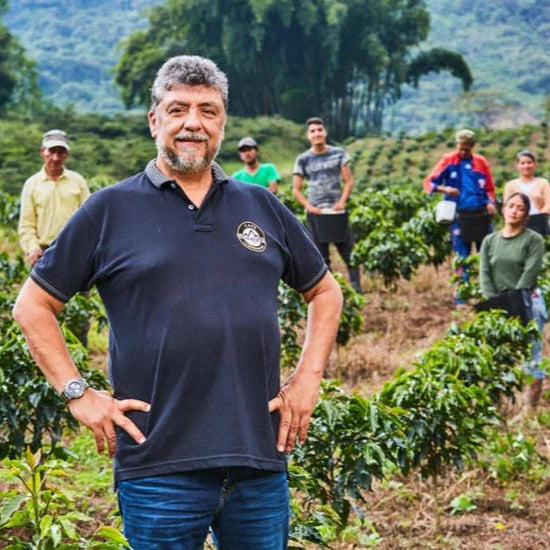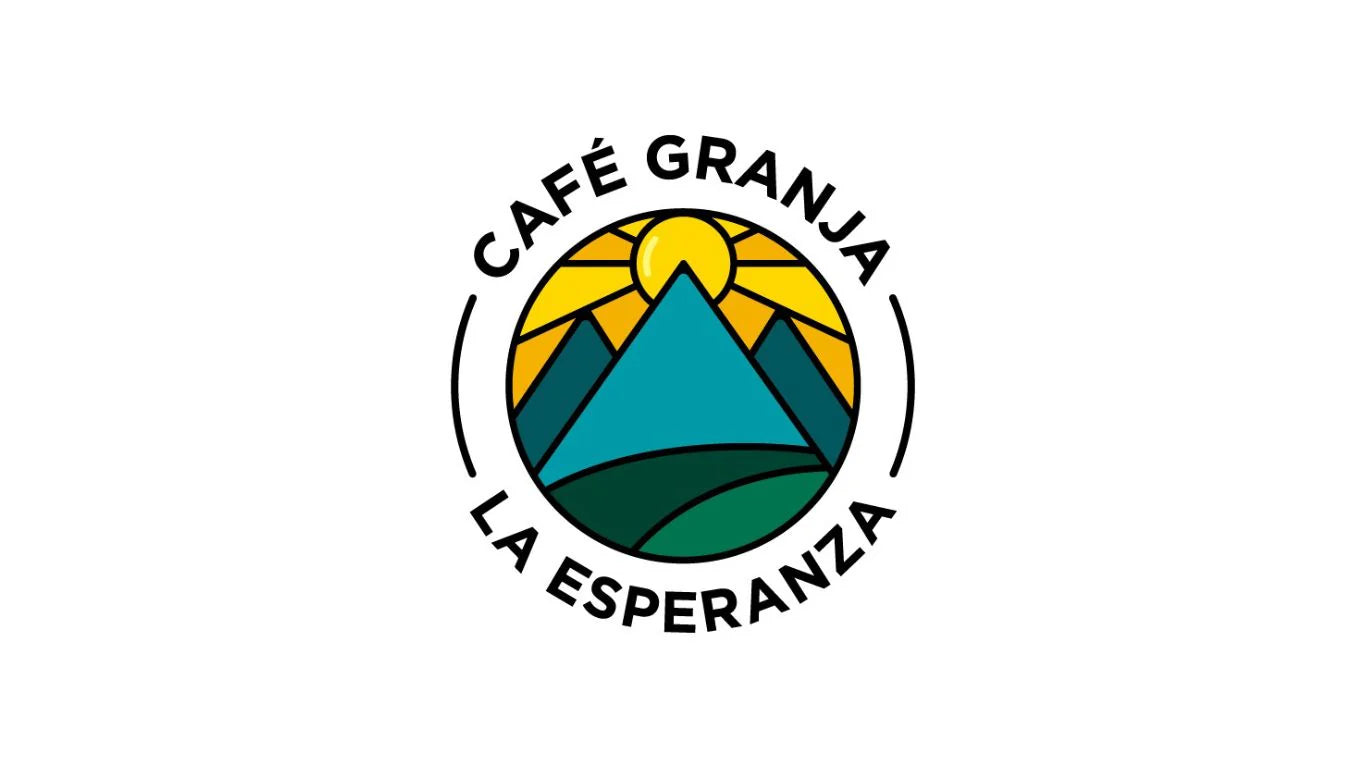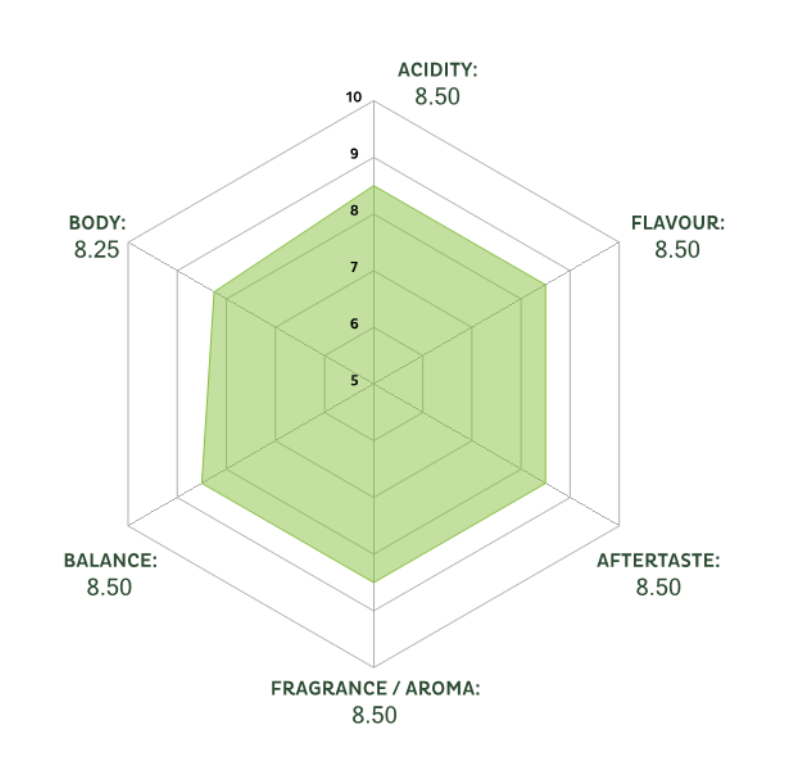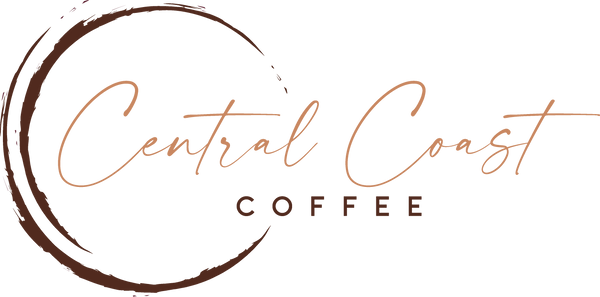


This coffee’s roasted in our filter style — meaning it’s designed to shine as black coffee rather than with milk. That doesn’t mean you have to brew it as a pour-over though. You can make it however you like — espresso, moka pot, AeroPress or anything in between. We simply roast it a little lighter to highlight the bean’s origin flavours giving you a cup that’s clean, vibrant and full of clarity.
Lighter roasting keeps more of the natural acidity and sweetness intact which makes for a beautifully expressive black coffee. This coffee is best enjoyed without milk as it’s too acidic and the flavours don’t pair well once milk is added.
If you prefer your milk coffee with richer caramel, toffee or nutty flavours you might enjoy our espresso range more. Those roasts are taken a little darker to bring out deeper sweetness and balance beautifully with milk.
Origin and Sourcing
?
?
Roast Details
?
?
?
?
?
?
?
?
Taste Profile
?
?
Colombia | La Esperanza | Tres Dragones | Natural - When is peak freshness?
Light Roast - Roasted on Roest L100 Ultra
BEAN DENSITY: 68.9 Kg/hl
Grade: Excelso
Sweetness(8/10): Orange marmalade-like sweetness
Flavour(8.5/10): Orange, tropical, cherry liquor, dark chocolate
Aftertaste(8/10): Medium-length, black tea-like aftertaste
Acidity(8/10): Medium-high, winey acidity
Mouthfeel/Body(8.5/10): Round mouthfeel and medium body
Balance & Overall(8/10): This coffee is complex, packed with sweet fruity notes and winey acidity.
About Tres Dragones
Tres Dragones is named after three furnaces used to dry coffee on the Potosi farm. Sparks from the furnaces caused a fire that burned down the farmhouse. The farm is located in Caicedonia and spans 52 hectares, with 34 hectares dedicated to producing the Colombia variety. This variety is a hybrid of Hybrid-de-Timor and Caturra, offering resistance to rust and high yield potential. After being fermented for 19-22 hours, the coffee is pulped and fermented again for 35 hours. It is then left to dry for 48 hours in a silo before being transferred to solar driers for approximately 15 days of rest.
-
About La Esperanza & Rigoberto and Luis Eduardo Herrera
Granja La Esperanza is a group of 6 farms in El Valle del Cauca and Cundinamarca owned by Rigoberto and Luis Eduardo Herrera, two brothers from a traditional coffee family. Their grandfather owned a very large Hacienda in the region of Trujillo that was slowly sold off over decades.
The Herreras left Colombia in the 1970’s to study engineering abroad but returned in 1998 with a dream to reconstruct their grandfather’s Hacienda and get back into coffee farming. Cafe Granja La Esperanza has taken great strides under the brothers leadership and forward thinking vision. In the last decade, the farm has moved from traditional 'C' market coffees, to the more delicate and exquisite varieties coveted by the specialty coffee industry.
The farm looks like a garden full of different coffee varietals and is one of the most progressive and experimental farms in the world. What we are witnessing here is an approach more akin to the rigours of fine wine-making where varieties are chosen more for their flavour attributes than their disease resistance. Many innovations have led to this excellence in the cup.
A hand picked group of pickers for example are trained to pick only the ripest cherries and are paid by the day, rather than the weight to discourage filling up baskets with unripe fruit. Rigoberta describes the 3 pillars upon which their control of coffee quality is built as 'The Genetic Material of the Variety, the Terroir and the Human Talent. Of the 3, the people who work at Granja La Esperanza are the most important resource'. This enlightened approach doesn't stop there - every delivery to the mill is tested with a brix meter, to measure sugar levels in the fruit - also a wine industry practice.
The processing and drying can then be adjusted accordingly. There are actually 95 different quality hurdles in place for the beans to negotiate from nursery to port! This tremendous investment of human resources, time, energy and money can only come about through total dedication.About Hybrid-de-Timor and Caturra
The Hybrid of Hybrid-de-Timor and Caturra is a coffee cultivar created through deliberate cross-breeding efforts to combine desirable traits from both parents. This hybrid is often discussed in the context of improving coffee cultivation in Colombia, where challenges like leaf rust, quality consistency, and yield optimization are significant.
Parent Varieties:
-
Hybrid-de-Timor:
- A naturally occurring hybrid between Arabica (Coffea arabica) and Robusta (Coffea canephora) found in Timor.
- Known for its high resistance to coffee leaf rust (Hemileia vastatrix), a devastating fungal disease.
- Introduces resilience and hardiness to the offspring.
-
Caturra:
- A natural mutation of Bourbon discovered in Brazil.
- Dwarf variety, making it more manageable and higher-yielding under proper care.
- Produces high-quality coffee with bright acidity and complex flavors, highly prized in specialty markets.
- Susceptible to leaf rust, which limits its viability in regions with high disease pressure.
The Hybrid in Colombia:
This hybrid combines the strengths of its parents:
- Leaf Rust Resistance: Inherited from Hybrid-de-Timor, making it suitable for areas affected by rust outbreaks.
- Cup Quality: From Caturra, ensuring the beans meet the standards of the specialty coffee market.
- Compact Growth: Easier to manage, thanks to the dwarfing characteristic of Caturra.
- Yield: Maintains good productivity levels, critical for farmers' economic sustainability.
Impact on Colombian Coffee Cultivation:
-
Improved Disease Resistance:
- Coffee farmers in Colombia face significant challenges with leaf rust due to the country's humid and warm climate. The hybrid provides a more sustainable option compared to older, more susceptible varieties like Typica and Bourbon.
-
Adaptation to Changing Climates:
- The hybrid is better equipped to withstand the impacts of climate change, including higher temperatures and erratic weather patterns.
-
Economic Stability for Farmers:
- Higher yields, combined with improved disease resistance, lower the cost of fungicides and other inputs, making coffee farming more profitable.
-
Specialty Coffee Market:
- While hybrids with Robusta ancestry can sometimes face skepticism in specialty markets, this hybrid balances resilience with high-quality cup characteristics, making it appealing to both farmers and consumers.
Key Varietals in Colombia:
In Colombia, this hybrid and other similar varieties (e.g., Castillo, Colombia, Tabi) have been promoted by the National Federation of Coffee Growers of Colombia (FNC) as part of efforts to enhance productivity and disease resistance while maintaining the country's reputation for producing high-quality coffee.
-
Coffee in Colombia
Colombia has been producing and exporting coffee renowned for their full body, bright acidity and rich aftertaste, since the early 19th century.
Colombia boasts a wide range of climates and geographic conditions that, in turn, produce their own unique flavors in coffee. This also means that harvest times can vary quite a bit. In fact, between all its different regions, Colombia produces fresh crop nearly all year round.
The increasing focus on the specialty industry is changing the way traders and farmers do business. It is becoming more common for farmers to isolate the highest quality beans in their lots to market separately. These higher-quality lots are often sold under specific brands or stories.
Besides its wide variety of cup profiles, Colombia has quickly expanded its certification options over the past 10 years. The most common certifications available are Fairtrade, Rainforest Alliance, UTZ and Organic.
SKU: col_la_esp_320g
Package Weight: 400g



